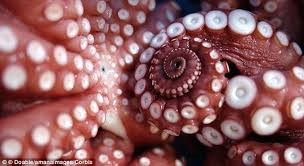
Breaking News
Endless Opportunities on Life's Highway
THE UNCONSTITUTIONAL INCOME TAX
 WOW: Schumer now privately BEGGING to reopen the Gov – Liberal Hivemind
WOW: Schumer now privately BEGGING to reopen the Gov – Liberal Hivemind
 Obamacare's Devastating Legacy: Skyrocketing Costs, Useless Coverage, and Windfall Profits...
Obamacare's Devastating Legacy: Skyrocketing Costs, Useless Coverage, and Windfall Profits...
Top Tech News
 Future of Satellite of Direct to Cellphone
Future of Satellite of Direct to Cellphone
 Amazon goes nuclear with new modular reactor plant
Amazon goes nuclear with new modular reactor plant
 China Is Making 800-Mile EV Batteries. Here's Why America Can't Have Them
China Is Making 800-Mile EV Batteries. Here's Why America Can't Have Them
 China Innovates: Transforming Sand into Paper
China Innovates: Transforming Sand into Paper
 Millions Of America's Teens Are Being Seduced By AI Chatbots
Millions Of America's Teens Are Being Seduced By AI Chatbots
 Transhumanist Scientists Create Embryos From Skin Cells And Sperm
Transhumanist Scientists Create Embryos From Skin Cells And Sperm
 You've Never Seen Tech Like This
You've Never Seen Tech Like This
 Sodium-ion battery breakthrough: CATL's latest innovation allows for 300 mile EVs
Sodium-ion battery breakthrough: CATL's latest innovation allows for 300 mile EVs
 Defending Against Strained Grids, Army To Power US Bases With Micro-Nuke Reactors
Defending Against Strained Grids, Army To Power US Bases With Micro-Nuke Reactors
Next-gen adhesive based on octopus suckers

Now, Korean scientists have developed a material that mimics the sucker discs on those tentacles. It could be used for adhesive pads that are reversible, reusable, fast-acting, and effective even in wet conditions.
A real octopus sucker disc has a hollow cavity in the middle, surrounded by a ring of muscle tissue. The size of the cavity is controlled by the octopus making that tissue thicker or thinner – the thinner the muscle tissue, the larger the cavity, and the lower the air pressure within it. A larger cavity creates more suction, while a smaller one causes the disc to release.
The scientists, from the Korea Institute of Science and Technology (KIST) and Ulsan National Institute of Science and Technology (UNIST), made their pad using rubbery polydimethylsiloxane (PDMS) studded with an array of tiny pores. Each of those pores is lined with a thermally-responsive polymer.

 SpaceX Heat Shield and Starship Mass Production
SpaceX Heat Shield and Starship Mass Production

